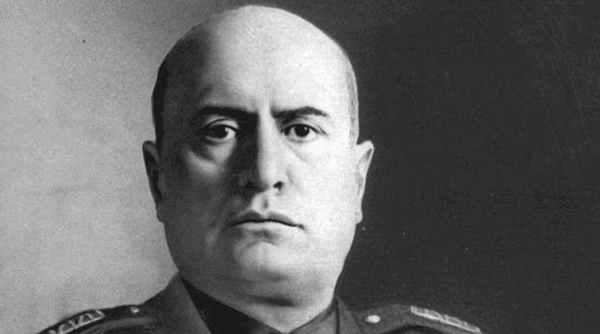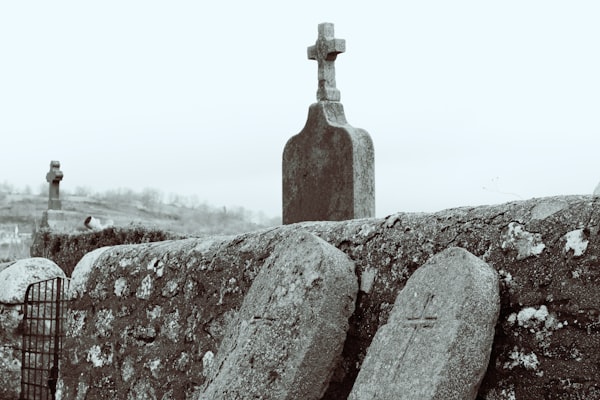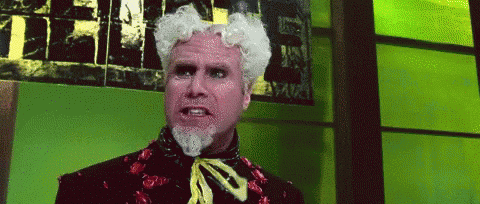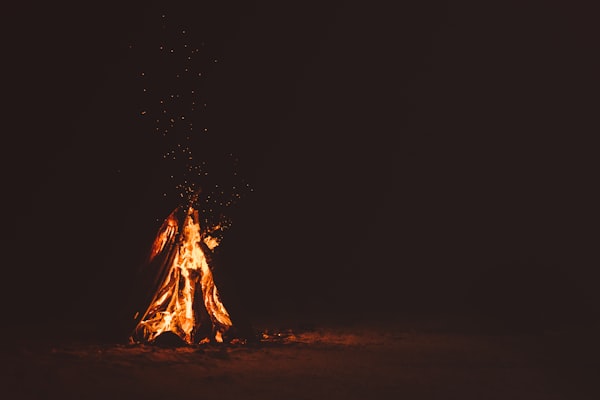The Brighter Future
Things can be better, if we do the work.

Saturday starts out sunny, so we catch the 9:05 rapid from Kirikiriroa to Paeroa. The plan: beach day. We make it to the station with time to spare, which isn’t too bad, as it was kind of a snap decision, and we’d only started biffing beach things into bags half an hour before getting on our e-bikes.
I sit with my laptop, tapping out a piece. This piece, in fact. They wanted some kind of retrospective on the last decade, the remarkable story of how Aotearoa had so quickly become a global leader on climate change, and I figured framing the story through our beach trip made sense. That, or I was just a bit desperate about the deadline and needed a quick and dirty device. While I fret about story framing, Leo lapses back to an earlier stage of childhood and gets his mum to play Eye Spy. I get a bit lost in my work and when Louise gives me a meaningful nudge I realise it’s been a solid 15 minutes. Nearly in Paeroa! I take Leo for a wander down the train, but it’s the cafe car he’s most interested in. I buy a pie for Leo, and can’t resist my own mince and cheese: the railway pies are legendary, and I tell myself that the fact that Leo’s is vegetarian makes us square. “Meat is a treat,” I say, silently.
Coming back from the cafe car, the view outside gets a bit grim. Flashing past is the pathway left by Cyclone Cassandra, which rode a plume of warm air inland, through the Hauraki Plains all the way south to the King Country. Entire shelter-belts felled, sheds blown across the landscape, flash floods ripping through bridges. The rail line was down for nearly a week while they checked the viaducts, but all the strengthening and triple-redundant engineering work had, well, worked. And I can see the Climate Corps have been busy: mobile sawmills have carved up the felled trees for timber and mulch, buildings and bridges are repaired, and there are new wetland restorations and riparian plantings started everywhere.
It feels like a metaphor for a decade ago: out of the wreckage and ruin, something new, something good. First, the Greens became the largest party on the Left, then — after the Chaos Coalition fractured, and the snap election — the new Green and Te Pāti Māori government, with confidence and supply from the Labour remnant.
Obviously, the rapid rail didn’t appear overnight. That took a lot of work and it’s really only in the last couple of years that it’s properly kicked off nationwide. But a lot of things got better pretty much straight away. It turned out that the Government had plenty to work with once it decided to take the 1940s approach and got back some of the money that had been hoarded, stolen and secreted away by sociopaths. Wealth taxes for the 1 percent, excess profit taxes on the mega-corporates, Robin Hood taxes on the banks: the commentators screamed and screamed but, once it became clear that more than 95 percent of normal people weren’t losing out but benefiting, the electorate were more than happy to see it continue. The first big improvements were in the health system, with free dental straight off the bat. I had three gaps in my teeth and a mutilated jaw from the bad old days when the only publicly-funded dental care you could get as an adult was an extraction; within a year, I had three shiny new artificial teeth. Transport was another quick win: the new government bought (and converted) as many e-buses as they could and pretty soon you could get an express bus from anywhere to somewhere else. For free. “Communism!” cried the Opposition and the commentariat, leading the new Minister for Transport to quip, “Transport for each according to their needs.” All the politics nerds thought it was funny. I thought it was funny. It probably wasn’t that funny.
And then the rail build started in earnest. We stopped using consultants from the New Zealand private sector, not just because they charged millions to do nothing, but because it turned out none of them had the slightest idea of how to build railways. Instead, we looked to Switzerland, and Japan: two nations with similarly challenging geography and notable rail-building expertise. We brought their best rail people over and said “how soon could you get this running?”
Quite soon, as it turned out, with enough people-power — and we had that in spades.
The Green Jobs Guarantee made the neoliberal economists absolutely lose their shit. It was a full employment scheme, paying a living wage, across a huge range of projects. Railways, native forestry, pest control, managed retreat, central-city densification, teardowns and rebuilds and renovations of entire leaky districts, climate-proofing coastlines with beach and dune restoration, weirs and seawalls and dykes. Heat pumps, insulation, double-glazing, air filtration, for any house that needed it. Riparian planting, eco-farm conversions, digging up lawns and planting food forests. Re-wilding, rangering, ecosystem management, kaitiakitanga guardianship, the big Crown Landback mana whenua schemes. Huge budgets for science, for the Department of Conservation, research institutes, universities, for throw-shit-at-the-wall, see-what-sticks solutions. A new Ministry of Green Works, the Climate Corps, hundreds of local organisations. Suddenly, everyone who wanted a climate job — a job that paid! — could have one.
Lots of people did. Cubicle drones quit in droves. Long-neglected regional towns filled up with hugely diverse mobile populations, all working on climate projects. Very little of it was based on what economists said was good for the economy (which, often, turned out to be what was good for the elite). It was instead based on a number of “heterodox” economic theories, which — when it really came down to it — were mostly about values. Needs became recognised as rights: to food, water, a home, community, care. Everything was organised around providing the essentials for everyone, and doing the needful to mitigate and adapt to climate change. The economy would take care of itself, just as it had for the thousands of years before economists had created the concept.
It was madness, the neolibs said. If everyone had enough money in addition to housing, food and job security, disaster would strike. They predicted exponential inflation. “A loaf of bread will cost ten million New Zealand dollars within a year!” screeched one prominent commentator. He bet his job on it. When it didn’t happen, he refused to quit, was fired, and moved to a houseboat. The last anyone heard of him he was arguing with a hydroplane full of bemused tourists that his boat was a sovereign nation and that they were infringing on his borders.
As time went on, the bigger projects started to come online. Once the electricity generator-retailers’ mandate changed from “make money” to “decarbonise” things really got underway. The hydro-powered mega-battery at Lake Onslow, plus a rapid rollout of renewables and rooftop solar took fossil fuels out of the grid. At the same time, the rapid rail network was being built. The trickiest part was getting new, bidirectional heavy gauge rail laid across the new overland routes, but helpfully, a lot of the work was already done. The Swiss and Japanese project leaders were impressed. Those scrappy Kiwi builders blasting through rock and scraping away with hand tools had done an amazing job for the times, and now we had modern engineering techniques to build on the solid foundation they’d left.
Back to our seats, as we pull into Paeroa station. Louise eyes the crumbs on Leo’s tee. I make innocent sounds, and offer to hang out with him during the Kaimai leg. She snorts with laughter. “It’s all scenic. Hardly a chore!” But when we switch to the light train from Paeroa to Waihi — a few modern trams strung together, really — she picks up her book and I take Leo to the packed viewing car.
The Kaimais are always a sight. The high gorge walls, the dramatic twists and turns of the river; even on a grey day it’s remarkable. But when it’s bright out, wow. The sharp blue sky cutting against the myriad greens of the forests, the train sliding almost silently down the parkway; it puts everyone in a wide-eyed mood. It helps that the train is packed with families and little kids. As we wind through the gorge parkways and trundle over the viaducts the kids wave at the hikers and day-walkers, and fizz when they wave back. Then they try to hold their breath through the tunnel; you could see them turning red in the dim light. I’d thought Leo was too old for that at 14 — he can be such a serious kid. But as we emerge from the tunnel I hear him gasp, but quietly, so I won’t clock what he’s been up to.
The light rail line terminates in Waihi, but let’s be honest: no-one wants to hang out in Waihi on a day like today. We grab the free e-bus out to Waihi Beach. We could have waited for the next one for a bit more room, but I want to get to the beach before the tide turns and the waves get sloppy. Leo offers his mum a seat, which is good of him. I make a mental note that she owes me some sitting-and-writing time on the trip back.
From the station in Waihi Beach we walk to the beachfront, and it’s a good thing it’s only a few hundred metres. It’s hot. It isn’t noon yet but it’s already 32 degrees in the shade, with high heat and humidity warnings in effect for later in the day. Luckily, it’s also windy, and that offsets it a bit. I’m slightly disappointed to see that the waves have got a bit blown out by the gusty offshore breeze.
Leo checks out the surf report. “It’s cranking at Whiritoa,” he says. I discuss it with Lou and we decide to bike. There are plenty of e-bikes at the kiosk so we get one each and set off.
In the olden days of a decade and a bit ago, it’d have been way too much of a mission. It’s 26 k’s from Waihi Beach to Whiritoa and there are plenty of hills. Back then, you’d have had to put up with bumper-to-bumper traffic, and cars passing you way too close, pedalling hard the whole way. Only the hardened warriors of the weekend lycra brigade would have chanced it. But now? All e-bikes and buses. We join a peloton, with entire families out for the ride, cruising along at a brisk 50 clicks. The few cars that go past — often providing for people with disabilities, local farmers, kaitiaki rangers, and the like — give us a wide berth, tooting. We wave back.
Whiritoa is hot, too. The electronically-assisted ride kept us cool but as soon as we hand the bikes in to the kiosk we can feel the heat walloping up from the asphalt: the old town’s roads are scheduled for greening and shade-tree transplants but it hasn’t happened yet. Even with a fully mobilised climate corps, there’s so much to do! Lou holes up in a heat shelter with a playground, cafe and aircon, and Leo and I hire boards and get amongst the waves. In one of those weird mixed blessings of our new Changed Climate era, the ocean is slightly cooler than normal for this time of year — a marine heatwave has been chased off by a cell of cool water from the Southern Ocean, which has also blessed us with swell.
The paddle out is rough. Today’s wave at Whitiora is a fat right, clean but heavy. There isn’t much in the way of a rip to ride out, and I feel all my 51 years once we’re out beyond the breakers. Leo crushes it; even though he’s slim for 14, constant swimming and frequent surf missions have built him up and he’s already caught one by the time I reach him.
We are out there for the next couple of hours, and they are bliss. In the water, it all recedes, like the waves, like the tides. The heatwaves, the heat domes, the wet-bulbs, the fires and the storms. You forget the mass die-offs, the coral catastrophe, the wars and the water shortages and every other awful artefact of the globally-heated Anthropocene. The worst of times, the best of times. There have always been terrible things in the world; what is different is now we see them, we face them, we deal with them, we do the needful.
Sometimes the needful is surfing.
Big wave coming. I paddle hard, pop up at the crest, turn, duck, dig in. Barrel! It lasts half a second, or maybe an eternity, the grin on my face reflected and frozen in the inner surface of the breaking wave like ice. Then the lip catches me and I go over the falls. Turned, tumbled, dumped and held. The surf pounds in my ears and I open my eyes. I can’t see a thing but I’m not winded — whew. My leg-rope yanks hard on my ankle and then slackens. It’s snapped. Somewhere up there, my board is tombstoning in the foam. I hold my breath and dig my hands in the sand for the next wave and pop up when things look less white.
Leo is waiting. Smart kid, he’s figured out exactly where I’ll come up. “Dad! You all right?”
I’m breathing heavy. Old man. “I’m good!” I say. “Just a hold-down. Most quiet time to myself I’ve had in years.”
Leo punches me in the arm, but not hard enough to deaden it. I pull myself onto his board and paddle out beyond the breakers again as he swims next to me. When my breath is back to normal we catch the waves back in to shore. A bloke with a German Shepherd has snaffled my hire board out of the surf and the dog is losing its mind; it’s never found a stick this big before.
We take the boards back to the woman at the hire stand next to the heat-shelter, and I get to pay extra for the snapped leggie. Leo spots a girl he knows from his statistics class — he’s nearly at uni level, kid is just ridiculously good at numbers — and they’re off chatting. I towel off, shirt on, catch up with Louise who’s been watching us through a zoom lens from the cafe.
“That was a big one,” she says.
“The wave or the wipe-out?”
“The wipe-out,” she says. “The wave wouldn’t have cracked three feet.” She hugs me. “You were down for a long time. And you lost your board.”
“Leo was there,” I say. I think about how weird that is. Kids are so strange in their teens. One minute you’re playing Eye-Spy with them on the train and they’re begging you to spot them a railway pie because they spent all their pocket money, and the next they’re a lean surfer dude ready to haul you out of the waves and paddle you back to the beach. And both these different things are true at the exact same time.
The country has grown up too. People like to stay in Aotearoa now, or if they leave for an OE, they actually come back. Turns out it was the chronically low-wage economy — kept that way on purpose, for decades, to keep the inflation boogeyman at bay — and lack of any real opportunity that was driving people away. Who knew! In hindsight, it’s all a lot more obvious. No young person wants to stick around when the only way up is to become the small-time feudal lord of a dozen decaying houses, and hope you can ride the market out. Boring! Only the dullest, least imaginative people want to do stuff like that. Most people want to do interesting things, and for those things to be meaningful. In other words, they want to work. It’s just that before, a lot of the jobs were bullshit.
They’re not now. The work is urgent, important, endlessly engaging. Everywhere you go, there’s a climate project, or a paid training opportunity. 75 year olds are bailing on retirement and getting university degrees in climate mitigation. Train conductor is something kids grow up wanting to be for the first time since, perhaps, the 1950s. And the world’s smartest people are pouring into Aotearoa to do climate work, because we’re finally funding it to the degree the emergency demands. When you do want or need to take a break from the world of work, the income guarantee is there to catch you, and there are no shortages of stipends and grants to encourage you to make something meaningful in your spare time. I’ve done it; I took a half-dozen years out to be full-time dad to Leo and paint pictures while Louise got really into collecting literary awards. We’ve swapped again now, and I’m back punching keyboards for climate. Now that there are dozens of independent local outlets running off carefully ring-fenced public funding — I’d like to see anyone in Government try and tell them what to publish, by law they’d practically have to bite their own heads off — it’s a lot easier to make a crust as a scribbler. In the past, we seemed to think that that job precarity would make people work harder. Of course, that was wrong: another one of those obvious-in-hindsight things. Productivity, whatever that is, comes of letting people do what they like.
Louise and I watch Leo chat to his friend. She takes my hand and I hold it. It’s not clear what they’re talking about: from the gestures, it could be about seeing a really big fish or sketching out a box-and-whisker graph in the air. He’s not sure what he wants to do yet; one day it’s Zeppelin pilot, another it’s ecologist like his uncle, another it’s statistician, which was probably my biggest “are you really my son?” moment so far. Lately he’s interested in geoengineering, pumping meltwater out from under the big Antarctic glaciers and up onto the ice sheets to stop them sliding into the ocean. It’s funny to think he might actually want to stay in the country, though. When we were his age, all anyone wanted to do was leave. Anything to go somewhere real, to get out from under a stultifying culture created by and for frightened old white people, to escape careers that seemed to amount to a choice between real estate or cows, cows, cows.
It all seems like a dream, a bad dream we didn’t know how to wake up from. There’s so much that’s harder now, so much that’s different. The world I grew up in is gone, and sometimes the sheer scale of everything we’ve lost and will lose to climate change feels impossible, a weight crushing all the breath out of me. But so many other things are better now, and that feels like magic. Just like in fairy tales and fiction, it turns out most of what we had to do was believe that it was possible.
It’s the hottest part of the day. We’ll be here for a while yet, before taking the bus back to Waihi and catching the train home. Louise has her book, Leo has his friend and animated chatter about — I think I catch a sentence fragment — polynomial regressions, whatever those are. All is as right in our world as it possibly can be, and yet there’s so much more work to do.
I get my laptop out of my bag and get back to it.
All my writing here is free. If you like what I’m up to, I ask you to share it.
This piece is intended as the chaser to a depressing shot. Some people told me that The Party That Can’t and The Party That Won’t was good, but very grim to read, and I wanted to write something that was the opposite of grim. So I wrote this. It’s a science fiction story, or at least I think it is. It’s fiction, and there is some science. And obviously there might be some fantasy elements. I don’t know if it’s physically possible to build a rapid rail network in ten years (although I suspect that with enough workers and funding it would be.) All that said, I still want you to take it entirely seriously. What could we accomplish, if we really put our minds to it, and we elected a government that both saw what was needful and (almost unprecedentedly) actually did it? And what would your story be, if we did such a momentous, important thing? That’s a take I’d love to hear in the comments. What does the Brighter Future — a term that I am intentionally lifting and shifting from the context of John Key’s National government — mean for you?




